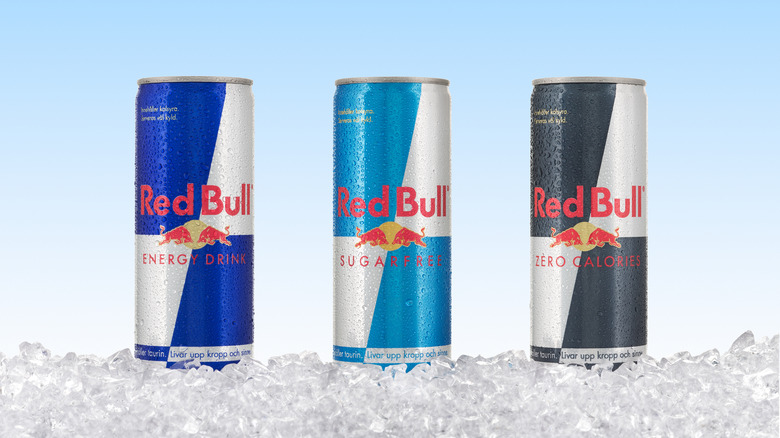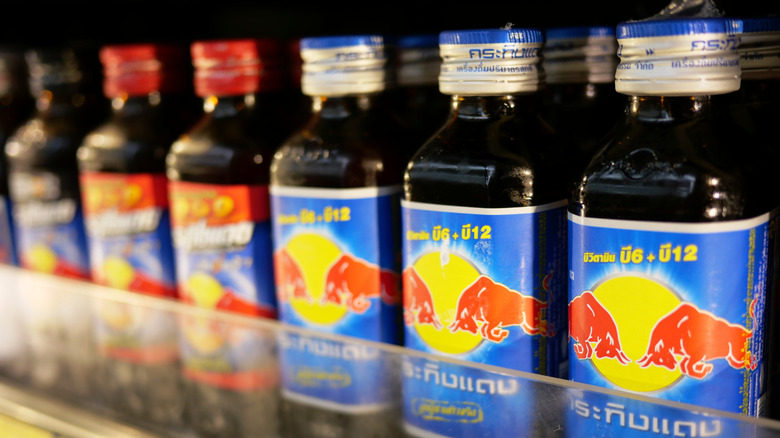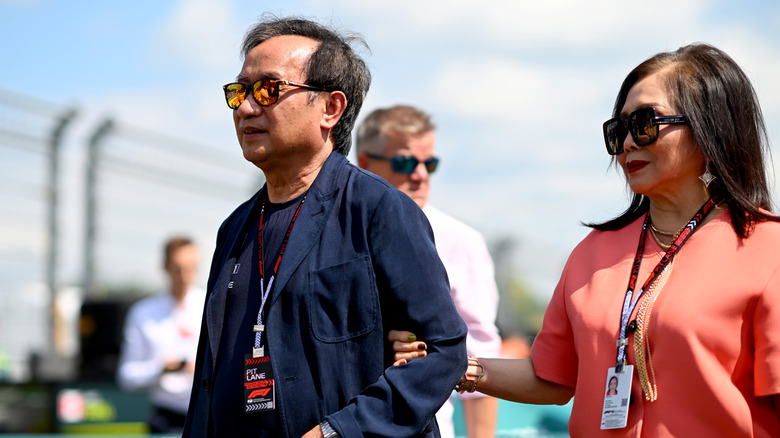The Thai Drink That Gave Red Bull Its Iconic Taste
The world runs on caffeine. Whether we're sipping tea or chugging soda, we get our pick-me-ups one way or another — and for billions of people around the world, the drink of choice is Red Bull. In the 1970s, Red Bull emerged as a former Thai farmer's purported hangover cure, and his family still gets paid dividends from the brand's success.
Chaleo Yoovidhya developed the original drink, Krating Daeng, around 1976 and sold it in Thailand through his pharmaceutical company. Facing competition from Japanese and South Korean energy drinks, Yoovidhya aggressively expanded Krating Daeng's footprint, making headway into Singapore and Hong Kong in the early '80s.
But it was Krating Daeng's continued popularity at home that helped turn a local favorite into a global powerhouse. Austrian businessman Dietrich Mateschitz was a fan of the drink, claiming Krating Daeng helped cure his jet lag on a business trip to Thailand. In 1987, Mateschitz and Yoovidhya struck a deal: They'd split the brand's ownership roughly in half and market it worldwide as Red Bull.
What's the difference between Krating Daeng and Red Bull?
Despite the name change, there's little to distinguish the Thai beverage from its international incarnation. They even feature the same dueling-bulls-in-front-of-the-sun logo designed by Yoovidhya himself (Red Bull has been pretty litigious over its logo). But when Mateschitz purchased a stake in the business, the pharmaceutical marketing expert set about modifying the formula — if only slightly — to satisfy drink standards in other countries.
Mateschitz endeavored to make Red Bull into less of a medicinal concoction, at least in its marketing. While Red Bull today retains its sweet flavor from the Thai original, the international version is carbonated to appeal to soda drinkers and to double as a mixer with alcohol.
Krating Daeng was designed with low-income Thai workers in mind — the kind of folks working long hours who might need a boost to get through a shift — but had expanded to sponsor Muay Thai events and become closely associated with the sport. Mateschitz took this and ran with it, marketing Red Bull to a younger clientele more interested in high-octane sports, and expanding its sponsorships to include BMX, snowboarding, and skydiving. Naturally, Krating Daeng's properly medicinal squarish glass bottle was swapped out for the now iconic blue-and-silver aluminum can.
It's still a family business
Today, the Austria-based Red Bull GmbH is a massive organization with a record label, a Formula One team, and more quirky offshoots to its name. But the energy drink at the center remains the same, and Yoovidhya's family still owns a majority stake in the company. In 2020, Red Bull paid out around a quarter of a billion dollars to the family. Yoovidhya, born to poor Chinese immigrants, had amassed a more than $4 billion fortune before his death in 2012. For Mateschitz's part, he graduated to be among the wealthiest food and beverage billionaires on the planet, owning a castle and an island by the time of his death in 2022. His son Mark inherited his stake in the company (and his vast fortune).
The Yoovidhyas remain a high-profile family in Thailand, sometimes for the wrong reasons. In 2012, shortly after the elder Yoovidhya's death, the Red Bull co-founder's grandson Vorayuth "Boss" Yoovidhya allegedly struck and killed a motorcycle-riding police officer with his Ferrari and fled the scene. Shirking his court appointments, he eventually skipped the country entirely. The case, on which the statute of limitations on some charges has expired, remains controversial in Thailand.
The late Chaleo Yoovidhya's original pharmaceutical business still exists, now helmed by his son Saravoot. He takes great pride in the company's continued marketing of Krating Daeng in Thailand and China, and the Red Bull formula's production in Bangkok.


